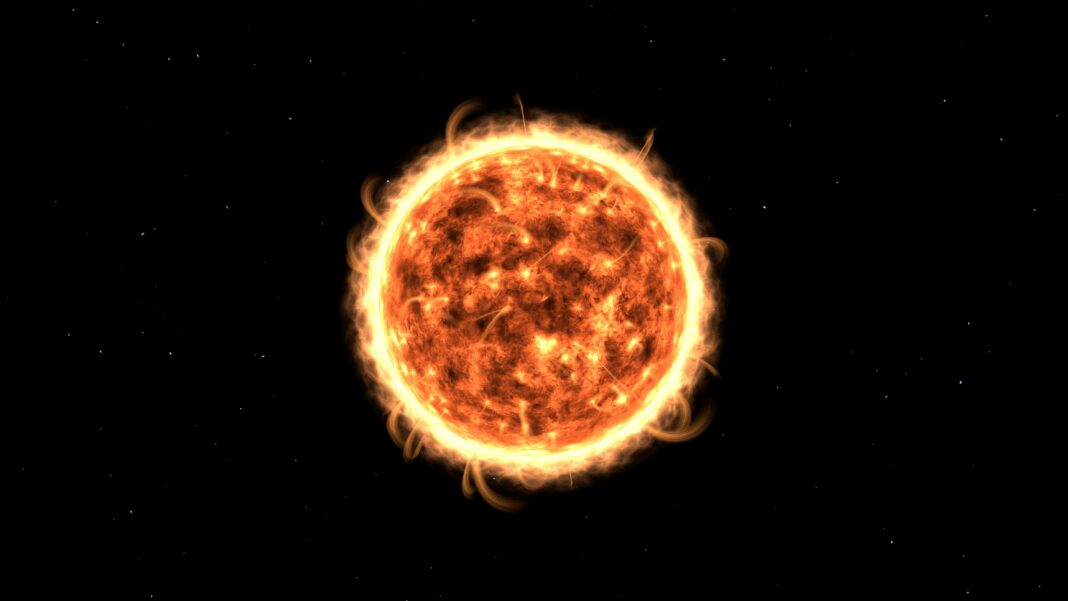The climate crisis is not an anomaly to us. The only difference between the climate crisis today and a few decades ago is that it’s worsening at an unprecedented, exponential pace. The Global Energy Review 2025 by the International Energy Agency shows CO₂ emissions reaching an all-time high of 37.8 billion tonnes in 2024! Rising population rate, indeed, is a major facet in increased energy usage, ultimately leading to extreme carbon emissions.
In recent years, though, another major factor has presented itself: the rising energy requirements of enormous AI data centres. Another report by the International Energy Agency predicts that the energy consumption for massive data centres is expected to grow 15 percent annually, more than four times faster than the growth in all other sectors.
Adverse impacts that follow these increased emissions continue to pose serious challenges to the environment and us human beings. In 2022, for instance, Pakistan suffered from severe floods caused by global warming, and, at large, such effects are only expected to rise in the upcoming years. With all this in the equation, it’s imperative for us to generate clean energy and, that too, at large scales. Utilising pre-existing clean energy sources to do so is inherently unreliable.
The wind doesn’t always blow, nor does the sun always shine, and most importantly, these methods are less efficient as compared to conventional methods of burning oil, coal, or gas. Given this, the infamous nuclear energy may be able to rescue humanity. “Now I’ve become hope, the savior of worlds?” Let’s find out.
Nuclear Fusion Benefits & Challenges
Fusion involves joining or ‘fusing’ two nuclei together to release energy that could power our homes someday. The compelling ability that it entails is producing an abundant amount of energy, nearly 4 million times more than the traditional combustion of fossil fuels, as reported by ITER, a leading project in the area. And if that wasn’t enough, the process also doesn’t release any harmful emissions like CO₂ and other greenhouse gases. A case study by MIT Energy Initiative found that incorporating fusion into New England’s energy mix would cut annual energy costs by $36 billion.
Extending this 7% price reduction across all energy consumption in the United States could save consumers $199 billion per year. MIT’s analysis further shows that fusion power could increase global GDP by $68 trillion to $175 trillion. While this boost to GDP could help wealthy nations grow, its greatest impact may be in regions like South Asia and Africa, where renewable power is sparse and electricity needs will grow nearly tenfold by the century’s end.

Conditions required to achieve this promising process are quite complex, though. The main ingredient is plasma, a state of matter with free electrons. Next, the plasma needs to be concentrated or confined close together for an adequate period so the nuclei can fuse. As easy as it may sound, this process initially involves heating the plasma to temperatures as high as 100 million degrees Celsius. Furthermore, we need to maintain this temperature, which is hotter than the very core of our Sun, so that the nuclei can gain enough energy to overcome the electrostatic forces between them and fuse.
In reality, the behaviour of plasma and how to control it is still not well understood. During magnetic confinement, plasma often experiences unpredictable turbulence, chaotic motion that causes it to drift away from the centre of the reaction. As it moves toward the edges, plasma cools down due to heat loss to the surrounding boundaries.
This loss of heat not only prevents plasma from reaching the high temperatures necessary for fusion, but also reduces the overall efficiency of the process. The challenge does not end there. When plasma comes into contact with the reactor’s boundaries, the intense heat can erode the reactor walls. As a result, the plasma can become contaminated, which further disrupts the fusion process. This leads to frequent maintenance and the need for replacement of damaged components, making fusion energy extremely expensive.
Recent Developments
Usage of AI has surged in the past few years, and recently, researchers at Princeton Plasma Physics Laboratory (PPPL) successfully deployed machine learning methods to predict the behaviour of plasma. With the ability to analyse vast amounts of data in real time, such AI models can anticipate instability events and then quickly adjust the plasma parameters (magnetic field strength, plasma current) in real time, thereby minimising such events. The research team at PPPL was able to demonstrate the highest fusion performance without any plasma turbulence at two different fusion facilities.
Active research is also being done on new kinds of materials, including smart alloys, that can be used as boundaries of reactors and, most importantly, have the ability to withstand erosion. Very recently, in April 2025, the French WEST Tokamak reactor broke all records by maintaining stable plasma confinement for over 22 minutes. This breakthrough was achieved without any corrosion of the reactor’s components or contamination of the plasma, which gives us reason to be optimistic that progress is indeed being made on finding erosion-resistant materials.

In recent years, new heating methods have emerged, which allow plasma to be heated efficiently and rapidly without significant loss of heat. One plausible method brought to light is heating through neutral particles, currently being tested in the ITER Neutral Beam Test Facility. Particles having a neutral charge can be accelerated towards the core of a fusion reaction without being influenced by electrostatic forces that exist in the reactor.
In principle, this deep penetration inside the plasma would precisely transfer energy to, or heat, the central region; thereby, the heat lost to the boundaries and, ultimately, more heat required to cover that loss to reach high temperatures would be avoided.
Commercialisation Of Nuclear Fusion
Imagine you wake up in a world where the energy crisis is no longer a concern, cheap and clean electricity flows into your home, and as you go out to take a stroll, you enjoy a deep, long sigh of purer air. Well, this imagination is not far from reality.
Throughout history, scientific progression has never followed a straight path; rather, it has relied on failures and mistakes to improve. The cumbersome number of fusion reactor designs being tested is indicative of the technological immaturity that currently exists. However, the global race to achieve commercialization has already begun. Recently, Japan’s government released a draft plan regulating commercial fusion.
In Europe, Germany’s newly elected government has set an agenda to develop the first fusion power plant in Germany. The UK, on the other hand, allocated about $530 million to fusion this January. In 2023, by some estimates, it was reported that China’s spending in the area was $1.5 billion alone, twice that of the Department of Energy in the US.
Given this increasing commitment, it’s only evident that fusion is the way forward for clean energy. A study by MIT’s Energy Review predicts that by the end of this century, fusion can account for a maximum of 50% of the total global share. Advancements in fusion are developing at an exponential pace at the moment; however, experts suggest that the scale and timing of fusion deployment in different regions will be driven largely by macroeconomic factors and decarbonisation goals. Factors like economic growth, population density, electrification needs, decarbonisation targets, and relative prices of electricity will play an important role in the commercialisation of fusion.
References:
- https://www.iter.org/fusion-energy/advantages-fusion#:~:text=Abundant energy%3A Fusing atoms together, reactions (at equal mass)
- https://www.energy.gov/ne/articles/nuclear-power-most-reliable-energy-source-and-its-not-even-close
- https://www.pppl.gov/about/about-plasmas-and-fusion
- https://doi.org/10.46632/jemm/2/4/14
- https://doi.org/10.1103/revmodphys.95.025005
- https://www.epj-conferences.org/articles/epjconf/pdf/2024/20/epjconf_lnes2024_00013.pdf
- https://www.iea.org/reports/global-energy-review-2025
- https://www.iea.org/reports/energy-and-ai/energy-demand-from-ai#abstract
- https://engineering.princeton.edu/news/2024/06/03/ai-approach-elevates-plasma-performance-and-stability-across-fusion-devices
- https://www.eia.gov/todayinenergy/detail.php?id=62945
- https://energy.mit.edu/wp-content/uploads/2024/09/MITEI_FusionReport_091124_final_COMPLETE-REPORT_fordistribution.pdf
- https://www.weforum.org/stories/2025/01/fusion-energy-future/
Also Read: Crashing Back to Earth: The Lesson of Kosmos 482

Wijdan Ali is a high school student at The City School PAF Chapter. Organising events like Hypercube, he has always been driven to spread the scientific spirit. Wijdan is ferociously curious about the universe and interested in emerging technologies. Combining both, he hopes to contribute to academic research.

